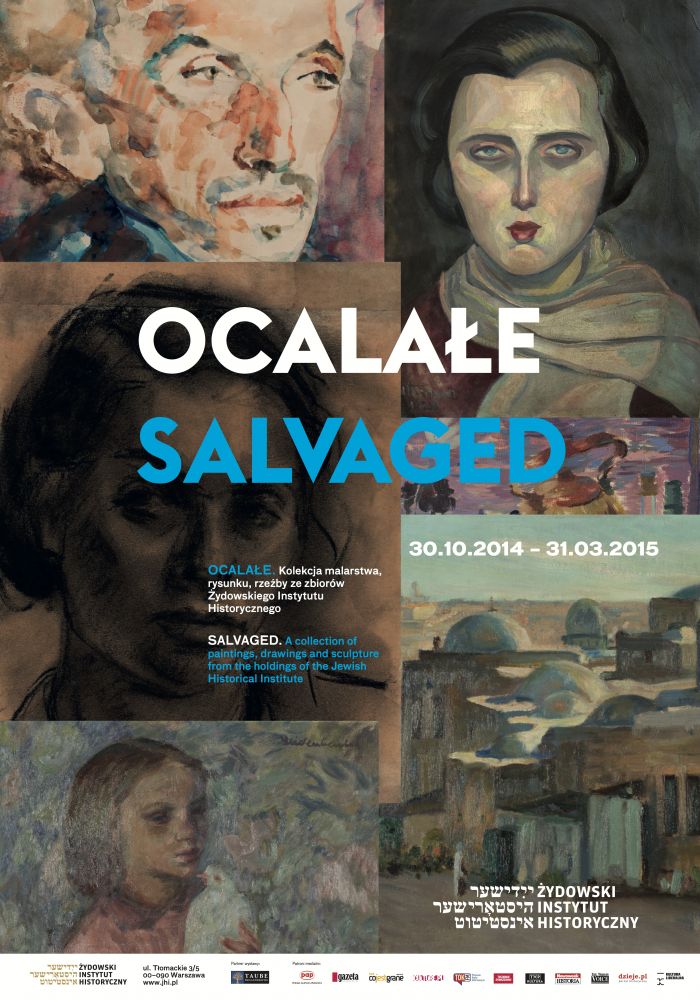The exhibition is also an attempt to break the silence surrounding these little known yet excellent artists. Arranged in two parts, it will be held on the occasion of the opening of the main exhibition of the Museum of the History of Polish Jews.
Objects gathered throughout the country since 1944 and saved from total destruction are a document of major importance bearing witness to the history of Polish Jewry. Such objects make up the greater part of the collections of paintings, drawings and sculpture held by the JHI Museum. They provide continual additions to the collections of works by major artists of Jewish origin and are frequently the only trace of the artists themselves, the only thing by which they can be remembered. The exhibition will present works by almost five hundred artists, testifying to the richness of Polish-Jewish artistic life in pre-war Warsaw and many other cities of the Second Polish Republic.
The exhibition is also an attempt to break the silence surrounding these little known yet excellent artists. Arranged in two parts, it will be held on the occasion of the opening of the main exhibition of the Museum of the History of Polish Jews.
- The first part, consisting of works created in the ghettos during the German occupation will be presented in a specially arranged space. A large proportion of the works are directly connected with Warsaw and Lodz. Most of them come from the Warsaw Ghetto Underground Archive, known as the Ringelblum Archive. They will include works by such artists as Gela Seksztajn – a series of portraits of children, drawings with comments by Rozenfeld (given name unknown) ̶ as well as drawings by Witold Lewinson, Roman Kramsztyk and Henryk Beck, works created in an atmosphere of mortal fear under inhuman conditions.
We shall also present works by Maksymilian Eljowicz, who, in the wartime Warsaw Ghetto, together with another artist, Józef Śliwniak, created the stained glass windows in the entrance hall of the Jewish Community Council building, as well as polychromes showing scenes from the Bible and Jews at work.
- The second part of the exhibition will consist primarily of works constituting the core of the JHI’s art collections. They depict a whole range of phenomena and ideas inspired by the problems of the time and the events of everyday life. These masters of colour, space, rhythm and form frequently dealt with the times of their childhood and adolescence. We shall be showing ‘landscapes’ remembered by the artists, town and country scenes, still lifes and portraits, genre paintings. What characterizes them all is the excellent workmanship acquired in the art schools and fine arts academies of Europe. We shall be able to appreciate the range of different styles and trends reflected in the exhibits, from realism, through impressionism and post-impressionism, to expressionism and surrealism.
- Important and common to both parts of the JHI exhibition SAVED FROM DESTRUCTION. A COLLECTION is their role as testimony to the lives of many artists that were so brutally cut off. They died of hunger, were murdered in the German extermination camps at Treblinka, Auschwitz, and Bełżec, or cruelly tortured to death in the ghettos of Warsaw, Lvov, Cracow, Bialystok and Lodz. Very few survived the hell of the Holocaust. All that remains of them are the remembered landscapes of a by-gone world.
Thanks to this exhibition we shall remember the exceptional works of such artists as:
Józef Badower, Abraham Behrmann, Henryk Beck, Henryk Berlewi, Sasza Blonder, Stanisława Centnerszwerowa, Henryk Chaimowicz, Samuel Cygler, Aniela Cukierówna, Henryk Cytryn, Maksymilian Eljowicz, Henryk Epstein, Erno Erb, Samuel Finkelstein, Abraham Frydman, Helena Głogowska, Jan Gotard, Dawid Greifenberg, Abraham Guterman, Maks Haneman, Samuel Hirszenberg, Henryk Glicenstein, Juliusz Idel-Podeszwa, Marcin Kitz, Artur Klar, Roman Kramsztyk, Józef Kowner, Izrael Lejzerowicz, Witold Lewinson, Artur Markowicz, Zygmunt Menkes, Jerzy Merkel, Józef Mittler, Artur Nacht-Samborski, Abraham Neumann, Henryk Rabinowicz, Julia Ringel-Keilowa, Leon Rosenblum, Rozenfeld, Mojżesz Rynecki, Bruno Schulz, Efraim i Menasze Seidenbeutel, Gela Seksztajn, Marceli Słodki, Norbert Strassberg, Szymon Szerman, Szymcha Simon Trachter, Maurycy Trębacz
Exhibition opening date – 30.10.2014
Closing date – 13.11.2015
Venue: Emanuel Ringelblum Jewish Historical Institute, Warsaw, 3/5 Tłomackie Street.

